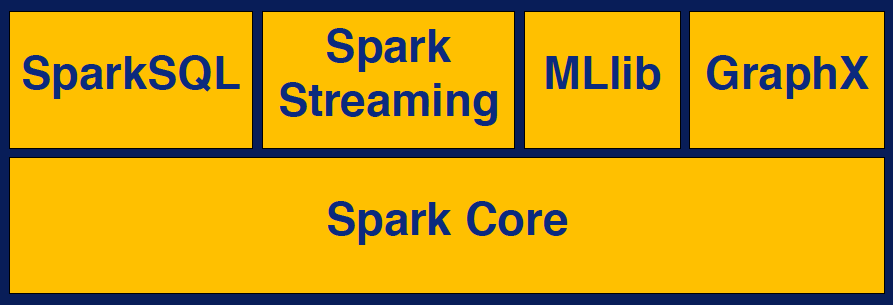Today I’ll talk about Big Data Integration and Processing on coursera. In this course, I got to know Apache Spark.
Spark was initiated at UC Berkeley in 2009 and was transferred to Apache Software Foundation in 2013. Since then, Spark has become a top level project with many users and contributors worldwide.
Why Spark?
As we have discussed in our earlier discussions, while Hadoop is great for batch processing using the MapReduce programming module, it has shortcomings in a number of ways.
First of all, since it is limited to Map and Reduce based transformations, one has to restrict their big data pipeline to map and reduce thefts. But the number of applications can be implemented using Map and Reduce, it’s not always possible and it is often not the most efficient way to express a big data pipeline.
Another important bottleneck in Hadoop MapReduce that is critical for performance, is that MapReduce relies heavily on reading data from disc. This is especially a problem for iterative algorithms that require taking several passes through the data using a number of transformations. Since each transformation will need to read its inputs from the disk, this will end up in a performance bottleneck due to IO. Most machine learning pipelines are in this category, making Hadoop MapReduce not ideal for machine learning.
Moreover, the only programming language that MapReduce provides a native interface for is Java. Although, it’s possible to run Python code to implementation for it is more complex and not very efficient especially when you are running not with text data, but with floating point numbers.
The programming language issue also affects how interactive the environment is. Most data scientist prefer to use scripting languages due to their interactive shell capabilities. Not having such an interface in Hadoop really makes it difficult to use and adapt my many in the field.
In addition in the big data era having support for streaming data processing is a key for being able to run similar analysis on both real time and historical data.
So, how does Apache Spark provide solutions for these problems?
Spark provides a very rich and expressive programming module that gives you more than 20 highly efficient distributed operations or transformations. Pipe-lining any of these steps in Spark simply takes a few lines of code.
Another important feature of Spark is the ability to run these computations in memory. It’s ability to cache and process data in memory, makes it significantly faster for iterative applications. This is proven to provide a factor of ten or even 100 speed-up in the performance of some algorithms, especially using large data sets.
Additionally, Spark provides support for batch and streaming workloads at once.
Last but not least, Spark provides simple APIs for Python, Scala, Java and SQL programming through an interactive shell to accomplish analytical tasks through both external and its built-in libraries.
The Spark Stack
The Spark layer diagram, also called Stack, consists of components that build on top of the Spark computational engine.

Spark Core
The Spark Core is where the core capability is of the Spark Framework are implemented. This includes support for distributed scheduling, memory management and full tolerance. Interaction with different schedulers, like YARN and Mesos and various NoSQL storage systems like HBase also happen through Spark Core. A very important part of Spark Core is the APIs for defining resilient distributed data sets, or RDDs for short. RDDs are the main programming abstraction in Spark, which carry data across many computing nodes in parallel, and transform it.
Spark SQL
Spark SQL is the component of Spark that provides querying structured and unstructured data through a common query language. It can connect to many data sources and provide APIs to convert query results to RDDs in Python, Scala and Java programs.
Spark Streaming
Spark Streaming is where data manipulations take place in Spark. Although, not a native real-time interface to datastreams, Spark streaming enables creating small aggregates of data coming from streaming data ingestion systems. These aggregate datasets are called micro-batches and they can be converted into RDBs in Spark Streaming for processing.
MLlib
MLlib is Sparks native library for mission learning algorithms as well as model evaluation. All of the functionality is potentially ported to any programming language Sparks supports and is designed to scale out using Spark.
GraphX
GraphX is the graph analytics library of Spark and enables the Vertex edge data model of graphs to be converted into RDDs as well as providing scalable implementations of graph processing algorithms.
To summarize, through these layers Spark provides diverse, scalable interactive management and analyses of big data. The interactive shell enables data scientists to conduct exploratory analysis and create big data pipelines, while also enabling the big data system integration engineers to scale these analytical pipelines across commodity computing clusters and cloud environments.